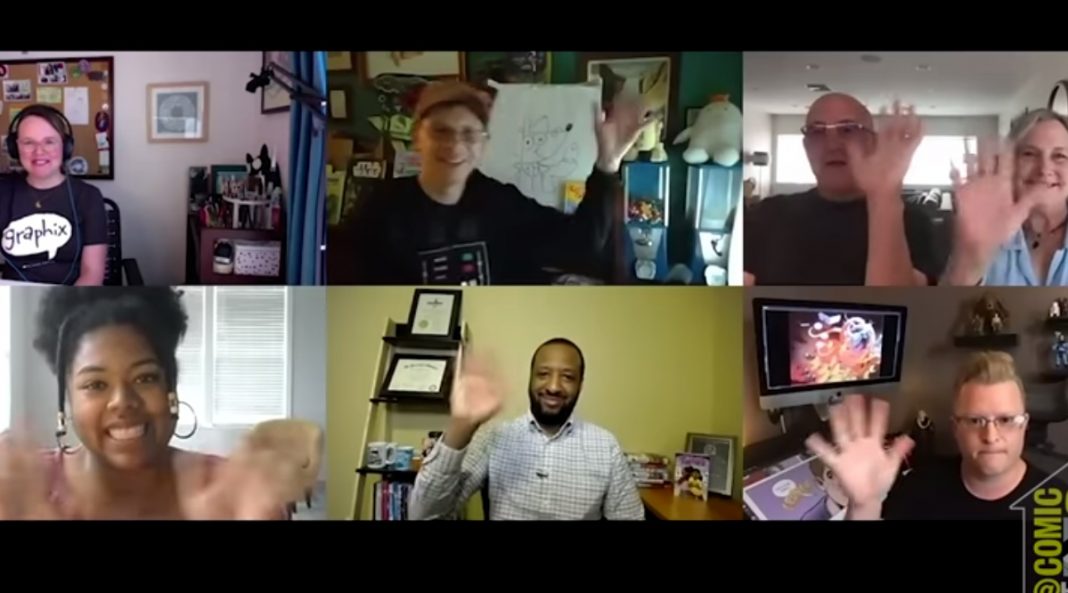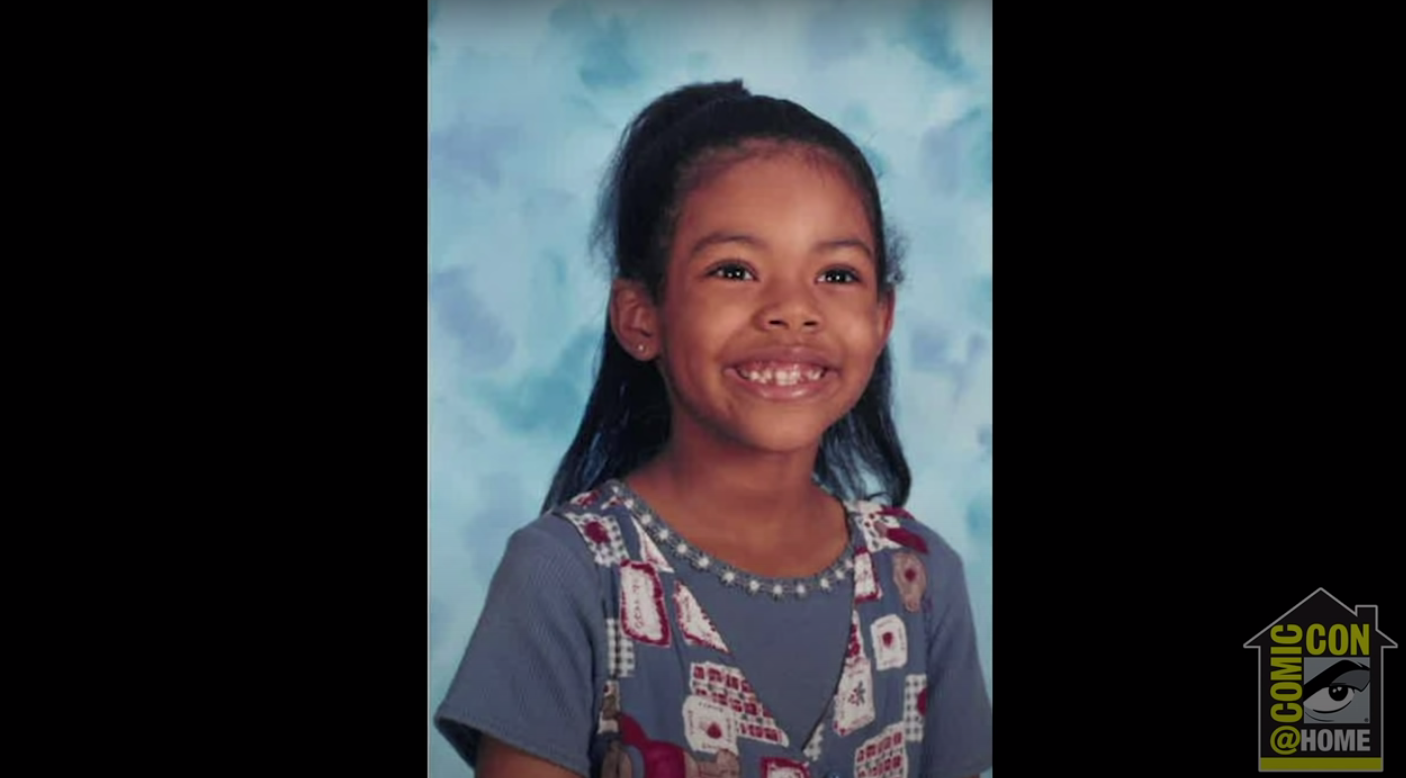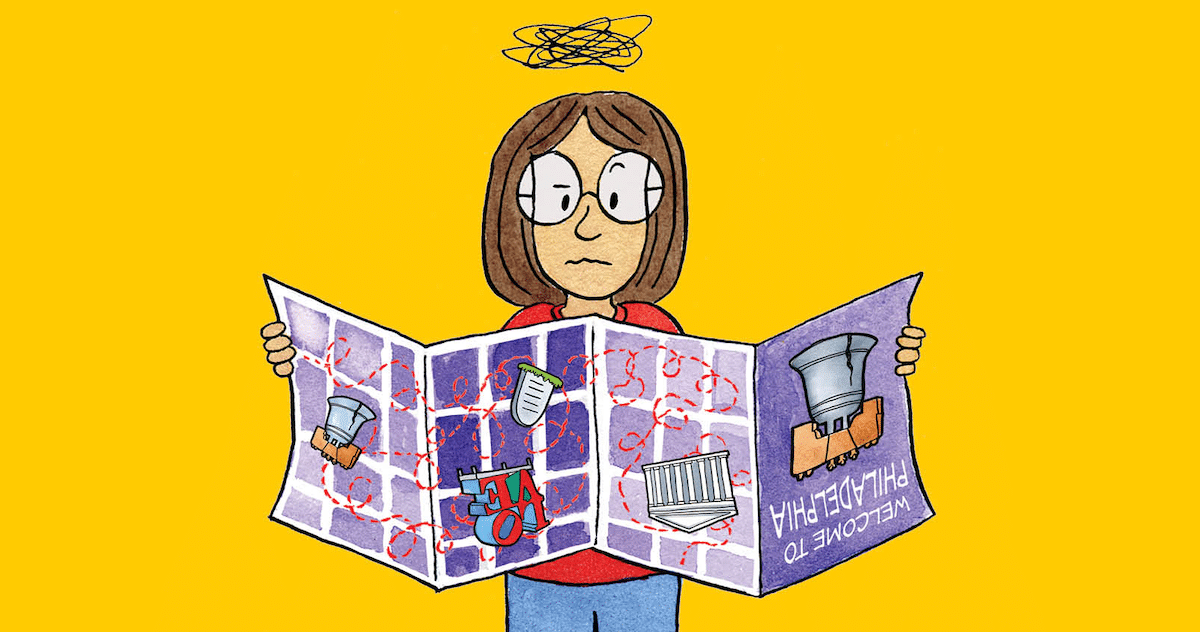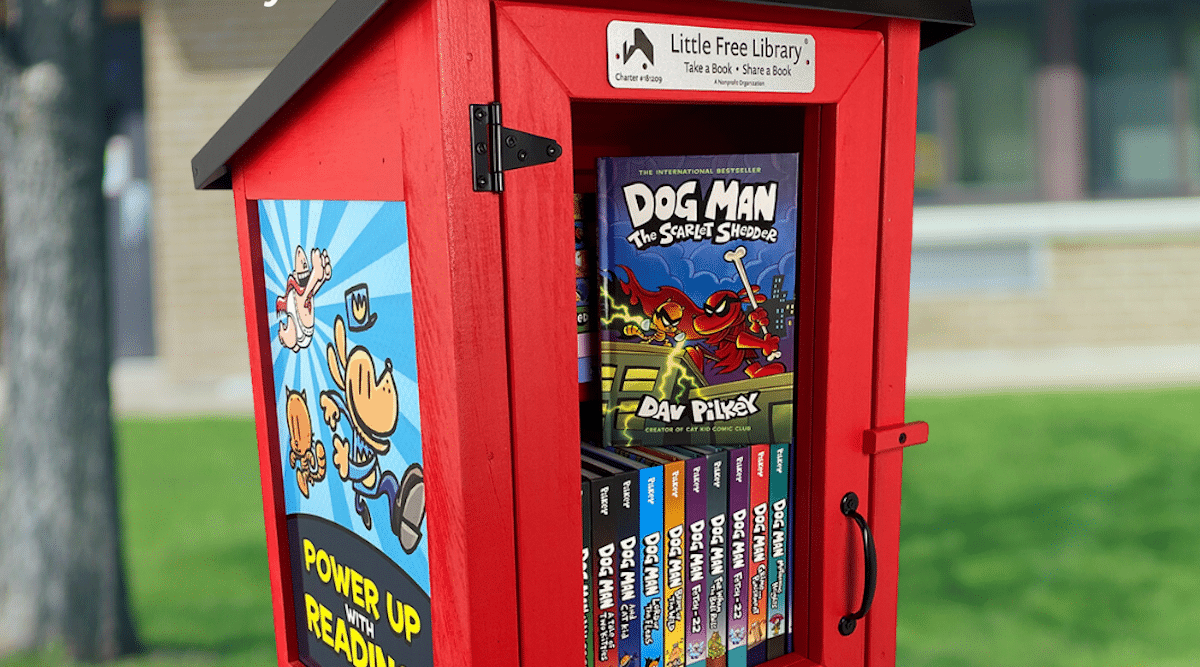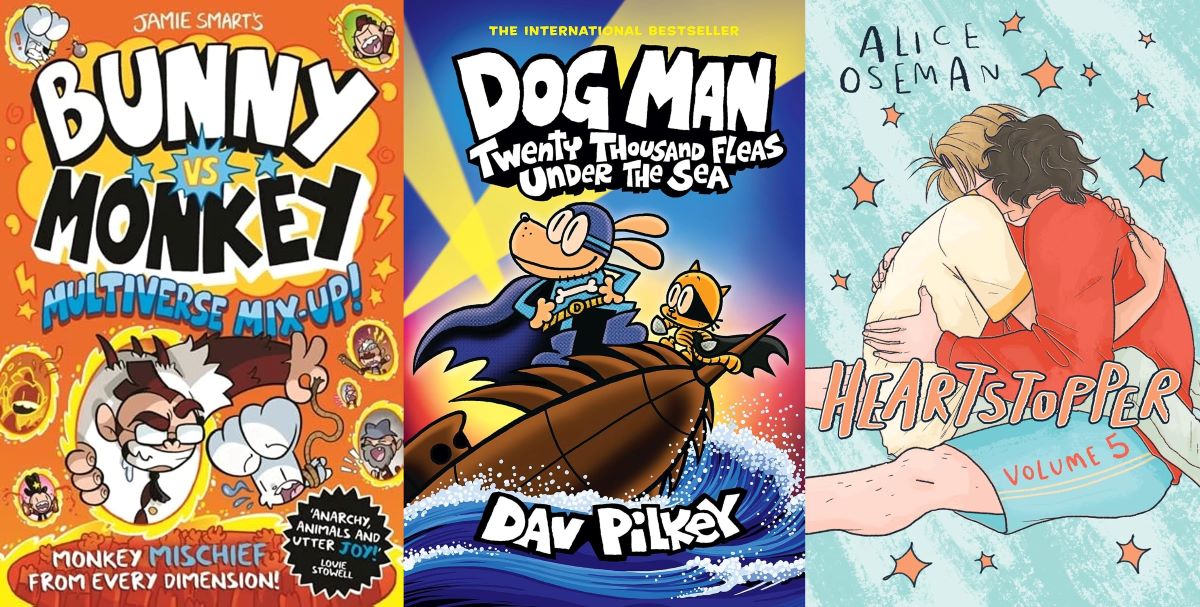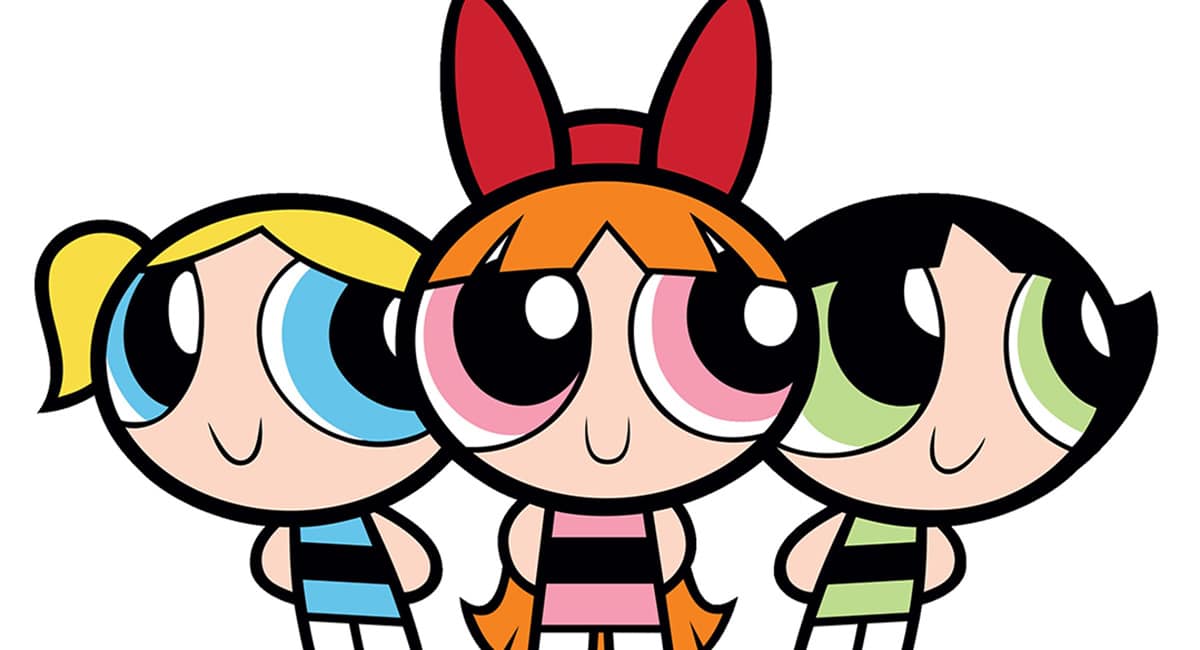The Graphix: Get Drawn In prerecorded panel at San Diego Comic-Con at Home was released on Thursday, July 23rd, 2020 at 10:00 AM Pacific Time.
The panel featured the creative team of the upcoming graphic novel Twins: illustrator Shannon Wright and author Varian Johnson. Also appearing on the panel were the authors behind the Animorphs series of novels, Katherine Applegate and Michael Grant, along with the illustrator adapting the Animorphs series to comics, Chris Grine. The illustrator of the Geronimo Stilton graphic novel, Tom Angleberger, was the final panelist, and middle grade graphic novel superstar Raina Telgemeier (Smile) moderated the conversation.
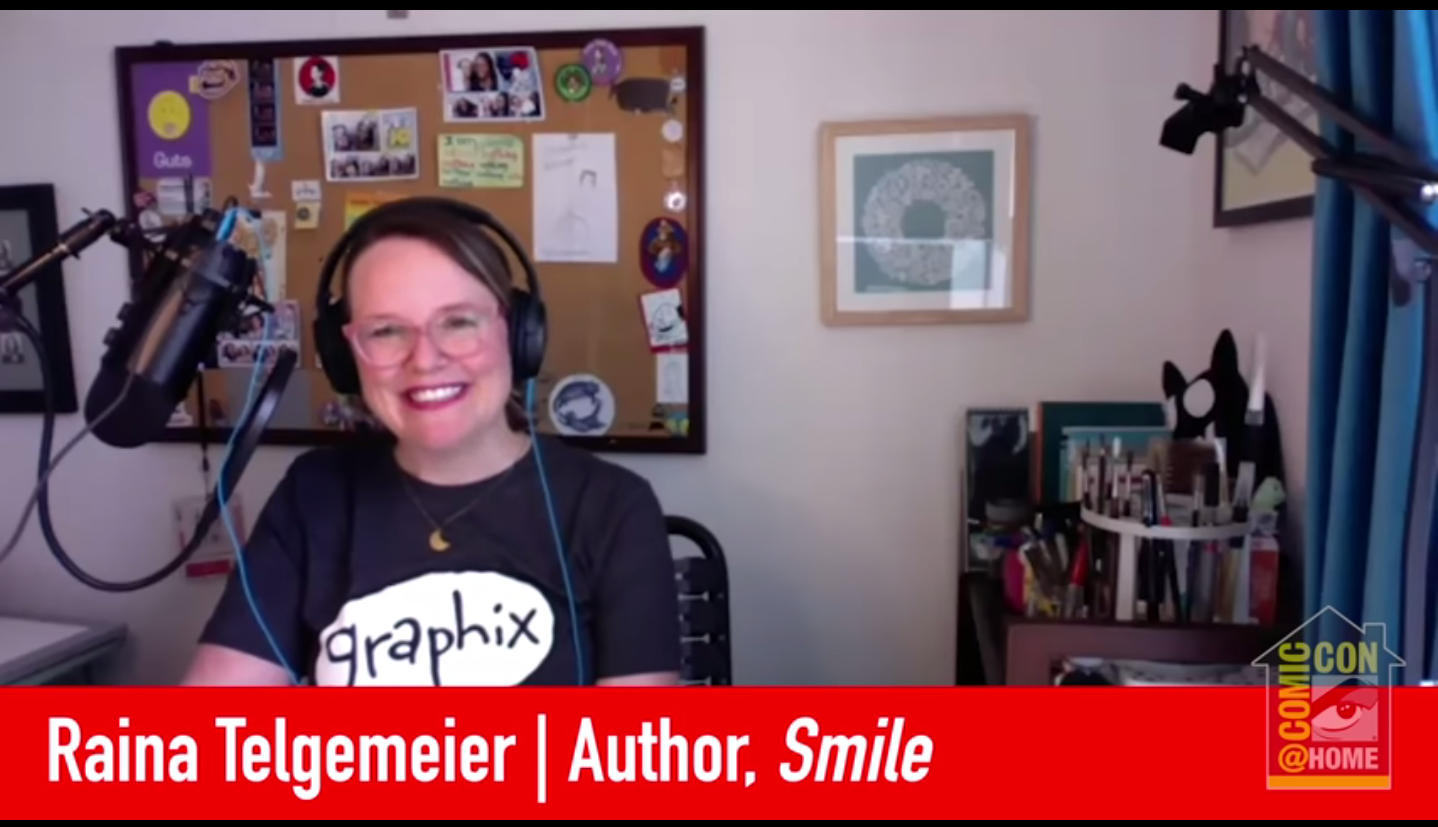
Twins
Twins by Wright and Johnson follows twin sisters Maureen and Francine. While the pair of sisters have always been inseparable, but when middle school begins, things begin to change – and when Maureen and Fran are placed into different classes, Maureen thinks there must be some kind of mistake. But soon, she learns that Fran actually requested they be separated!

“I’ve written a bunch of prose novels, but I don’t think I’ve ever written anything quite as autobiographical as Twins,” said Johnson. “You see, just like Maureen and Francine, I’m a twin: five minutes younger than my identical twin brother. And like the girls, my brother and I shared all the same classes – that is, until middle school.”
However, it wasn’t just his own experiences that inspired Johnson: he was also inspired by his daughters, especially his oldest, who “inhales” graphic novels.
“It actually irks me a little bit just how quickly she reads them,” joked Johnson. “I’m like, ‘kid, do you know how long it took to make that book? Slow down!’”
Johnson says graphic novels helped his daughter transform from a reluctant reader to a voracious reader, but they struggled to find graphic novels where she was able to see herself represented on the comics page. This led to some crucial creative developments for Twins.
“Black kids deserve to see themselves as the stars of the story,” said Johnson. “And it’s just as important for other readers to see Black kids as the main characters, as the stars of the story, as well.”
Johnson also described how he had to develop new skills for writing a graphic novel in spite of his experience writing prose.
“For any of you guys out there who are thinking about writing a graphic novel, let me warn you now, it is an entirely new and different way of thinking,” Johnson said. “As a novelist, when I’m thinking about pacing, I’m often weighing the length of each chapter, paragraph, or sentence. But with graphic novels, I’ve found that I also had to think about pacing in terms of panels per page, and in some cases, even the size of those panels.”
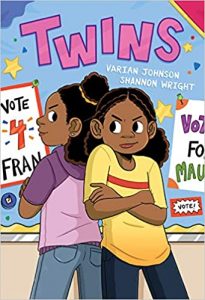
“I also discovered that working on a graphic novel was more of a partnership,” said Johnson. “Certainly more so than any of my previous novels. Sure, it was my job to come up with the script, but I didn’t write it in a vacuum. In addition to my editors, Shannon reviewed the script at each stage, and her comments weren’t just limited the art. Shannon and I talked through the dialogue and the characterization – really, all parts of the book.”
Johnson said that the creative team was important for the goals they had for Twins.
“My editors and I felt it was not only important to create a book with Black characters, but to also have a co-creator who was Black,” said Johnson. “If we are really committed to diversity and inclusion, we need to make sure all aspects of our work are diverse – not just the characters on the page, but the people behind the book. Plus, I needed a partner who got what it meant to be a Black girl. Someone who understood that Black kids come in all shades and shapes and sizes. Someone who understood all the wonderful ways in which you can style our hair. Someone who understood Black families and Black love.”
Johnson found that partner in Wright.

“Varian and I partnered up for Twins to try and create something special, something genuine,” said Wright. “And it was important that that diversity not only took place on the page but behind the scenes, too. So when it came to creating Maureen and Francine, it felt so natural, because in them, I saw myself – and not only myself, I saw my cousins and my family members, I saw some of my classmates. It felt like I was looking in that mirror and actually seeing my younger self for the first time in comics.”
Wright explained that this experience was invaluable in developing the characters.
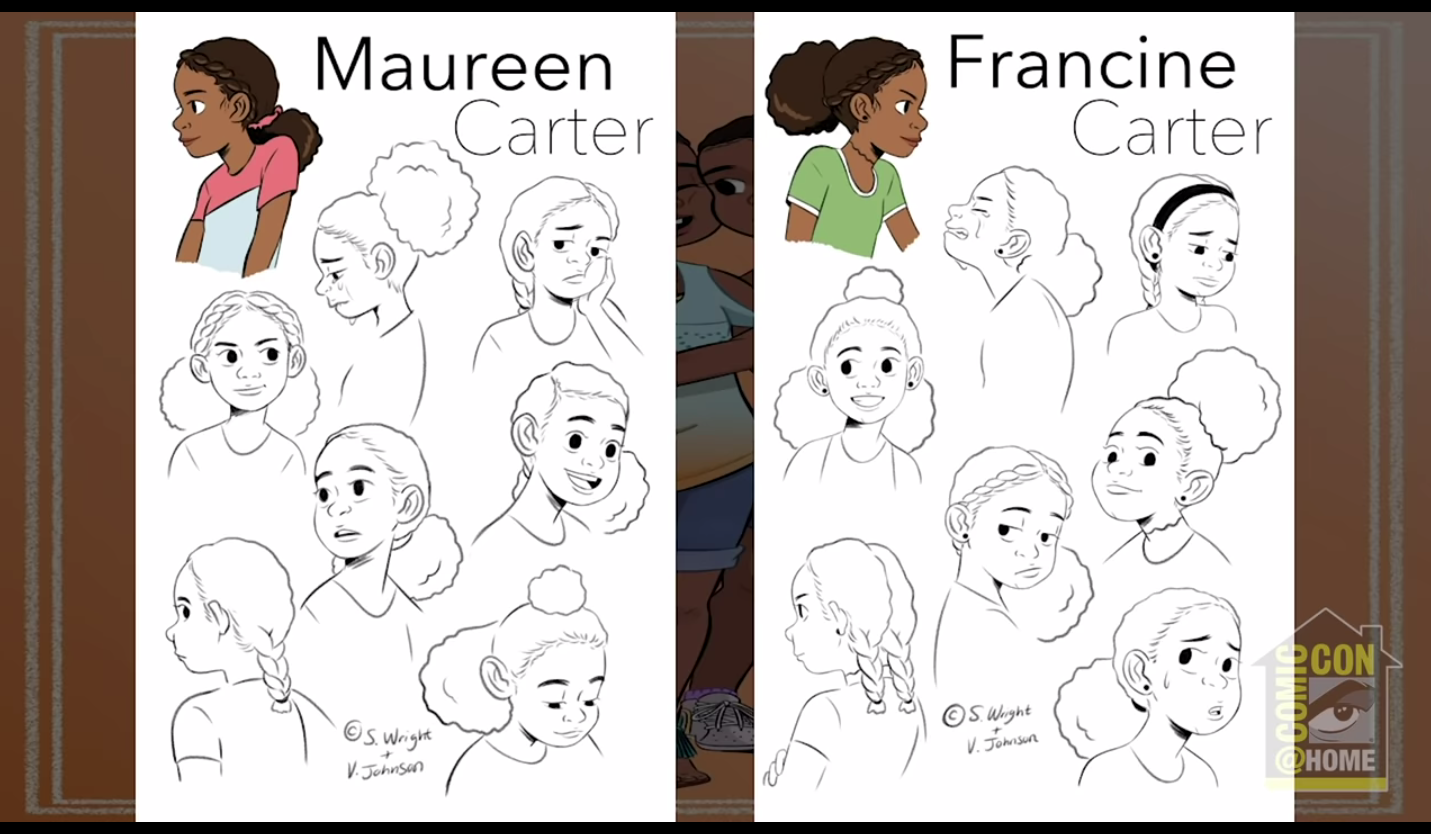
“When initially designing the girls, I wanted to make sure that their individual personalities really shined through despite them being identical twins,” Wright said, “because at the end of the day they are very much their own person and they’re not interchangeable.
I took reference from my own life, and all the Black kids who I had ever interacted with, But I also took reference from real life, from Black siblings who are identical but very much still their own person.”
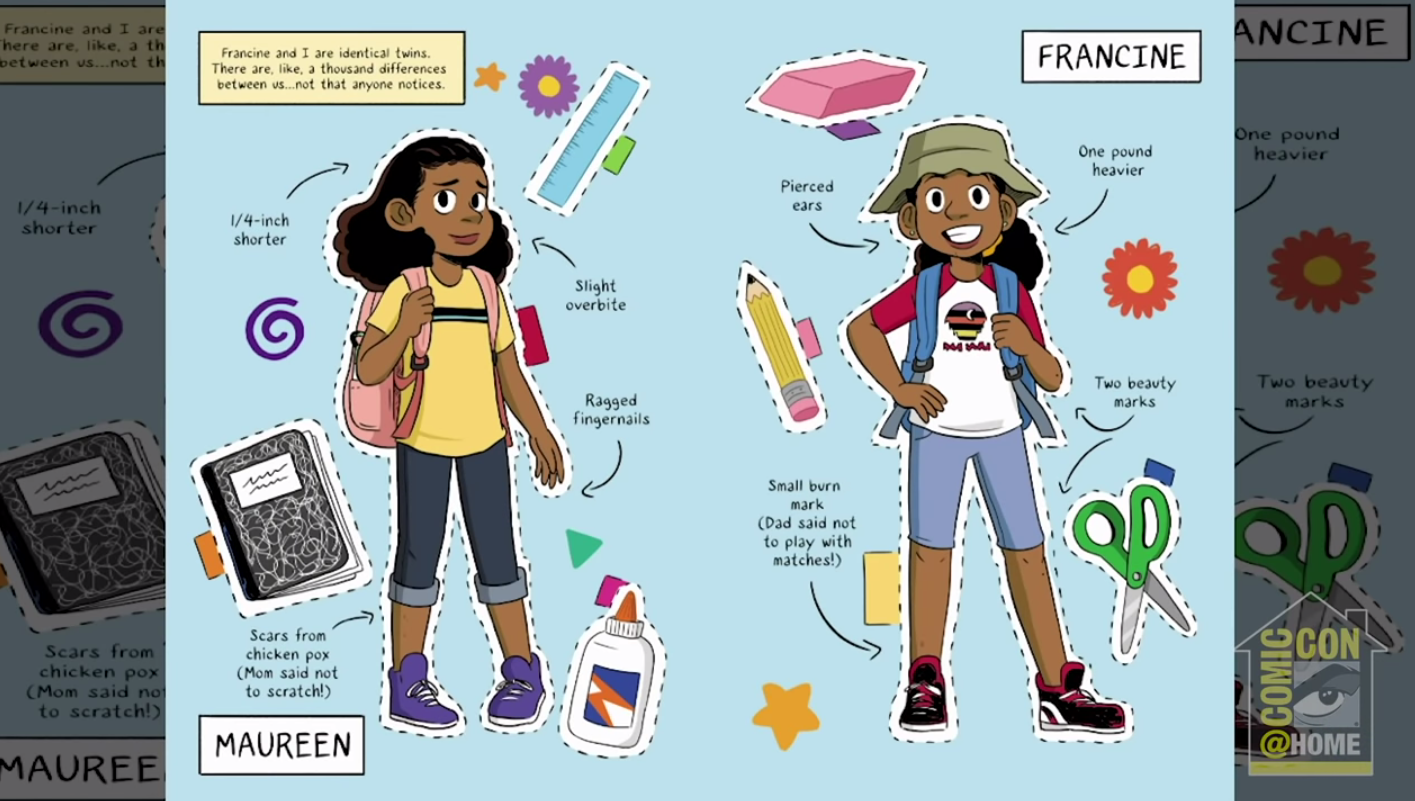
Wright said she and Johnson worked hard to create a world filled with characters who are important to the story.
“Varian and I worked very closely together to create a world for our characters to exist in, and that included families and friends – their community,” Wright explained. “They’re all equally important to the story and reflect so many children and individuals who oftentimes get left out of the narrative. So many kids and students who don’t get to be the stars or protagonists of these stories.”
Wright said that the process of creating a graphic novel was complicated and involved that required you to rely on your partner.
“If you’re working with someone, it’s a partnership, a true collaboration, and graphic novels should be acknowledged as such,” Wright said. “They are a marathon, not a sprint – believe me. And as partners, we trusted one another to put in the time and do the research to make this world very much alive and lived in.”
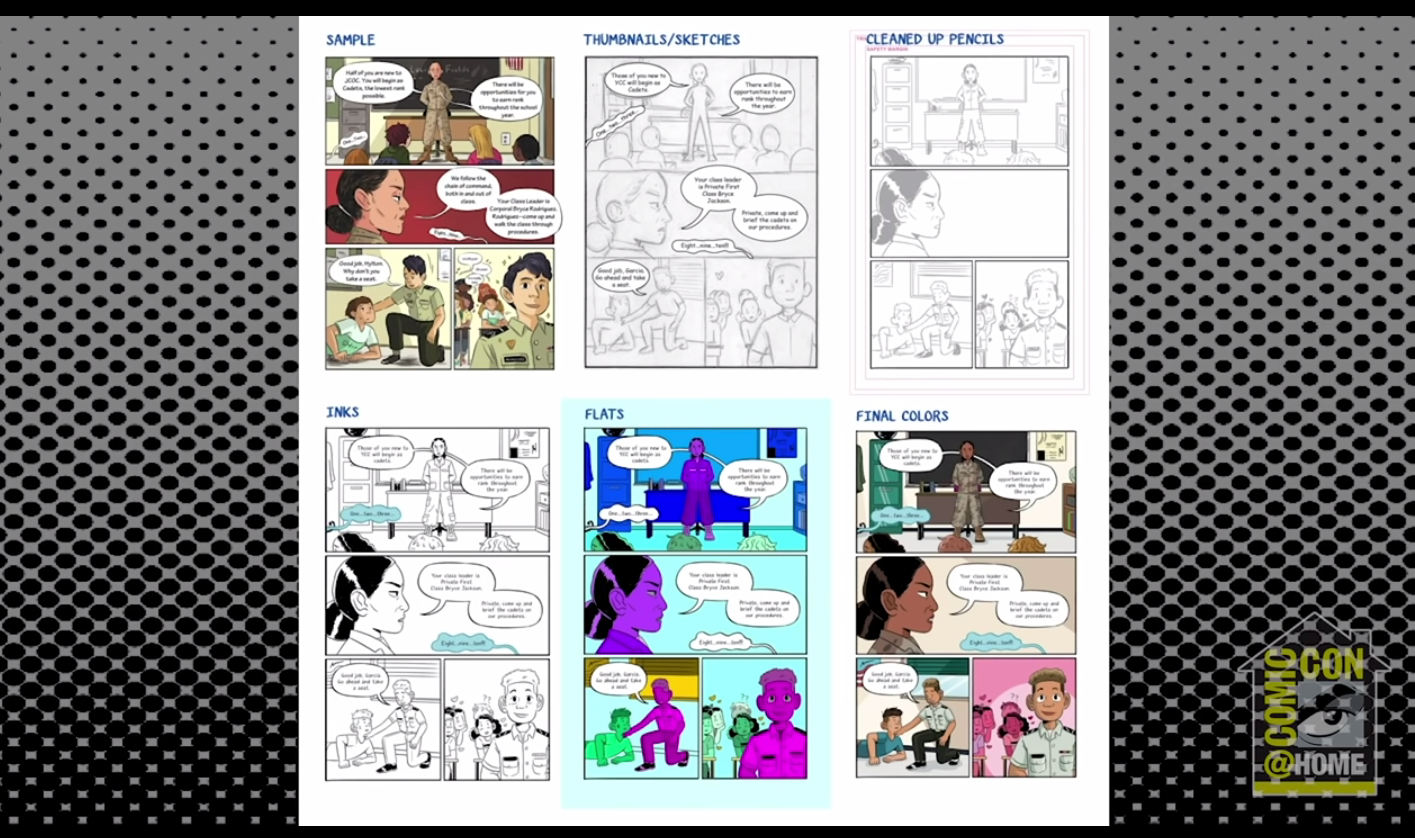
“Twins is a love letter to Black families, much like my own,” said Wright. “And to the communities that raise, shape, and change us.”
Wright said that she had another motivation while working on Twins.
“But for me, Twins is ultimately also a love letter to this little girl, who hadn’t been able to put down her pencil since she was four years old,” said Wright. “A little girl who also devoured books but could see she wasn’t the star in hardly any of them. And in creating Twins, I thought of a little girl who had a tool and wanted to change that.”
Animorphs from Graphix
Animorphs was a series of over 50 children’s science fiction/fantasy books by K.A. Applegate (the collaborative pen name of co-authors Applegate and Grant, although several ghost writers also contributed to the series). The original series was published in the mid-to-late 90s, and between the upcoming graphic novel adaption, new audiobook recordings of the series on Audible, and an impending movie, the team of Yeerk-fighting teenagers is enjoying something of a renaissance.

“We wrote Animorphs a very, very, very long time ago,” said Applegate. “So we were significantly younger and very excited because it was our first big series.”
Applegate and Grant shared the creative genesis of the series.
“I have always had this thing about animals,” said Applegate. “When I was growing up, I wanted to be a vet. So right away I was like, ‘I would love to be able to put kids into the heads of animals, but in a very real, visceral way.’”
“And I immediately thought, ‘well, that’s obviously a Sci-Fi concept, and we’re going to need some aliens,” said Grant. “So we brought the aliens and then pretty soon we had an idea. Basically, we put it together as a series bible and sent a couple of sample chapters off, and boom! Scholastic bought it.”
“This was during the time when a book a month was coming out,” said Applegate, citing Goosebumps by R.L. Stine and The Baby-Sitters Club by Ann M. Martin. “And they were coming out every single month. This meant we had to write a book every single month. This meant a lot of coffee was consumed, especially after we had our first child.”
Grant recalled writing on a laptop outside the Neo-Natal Unit while Applegate was inside.
“So we struggled a lot. We wrote most of them, eventually we used some ghostwriters, who were amazing too,” said Applegate. “One of the things that really struck a chord with young readers were Dave Mattingly’s amazing covers. And they just hopped off the shelves. And they had these flip pages, which I understand librarians hated because they destroyed the books, but that was a really cool feature.”
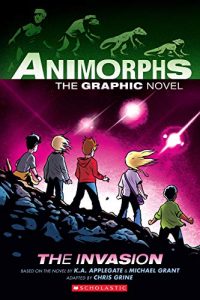
“We didn’t do that work, that’s Chris,” said Grant. “He gets all the credit, he’s done a great job. We contributed nothing but the original idea and one hundred percent of whatever credit there is goes to him for that.”
Grine has been making comics professionally since 2005. He says the series was originally released when he was in college, and he didn’t get a chance to read it until after he had graduated.
“When I had the opportunity to adapt these books into graphic novels, I jumped at it right away, and it’s just been so amazing,” said Grine.
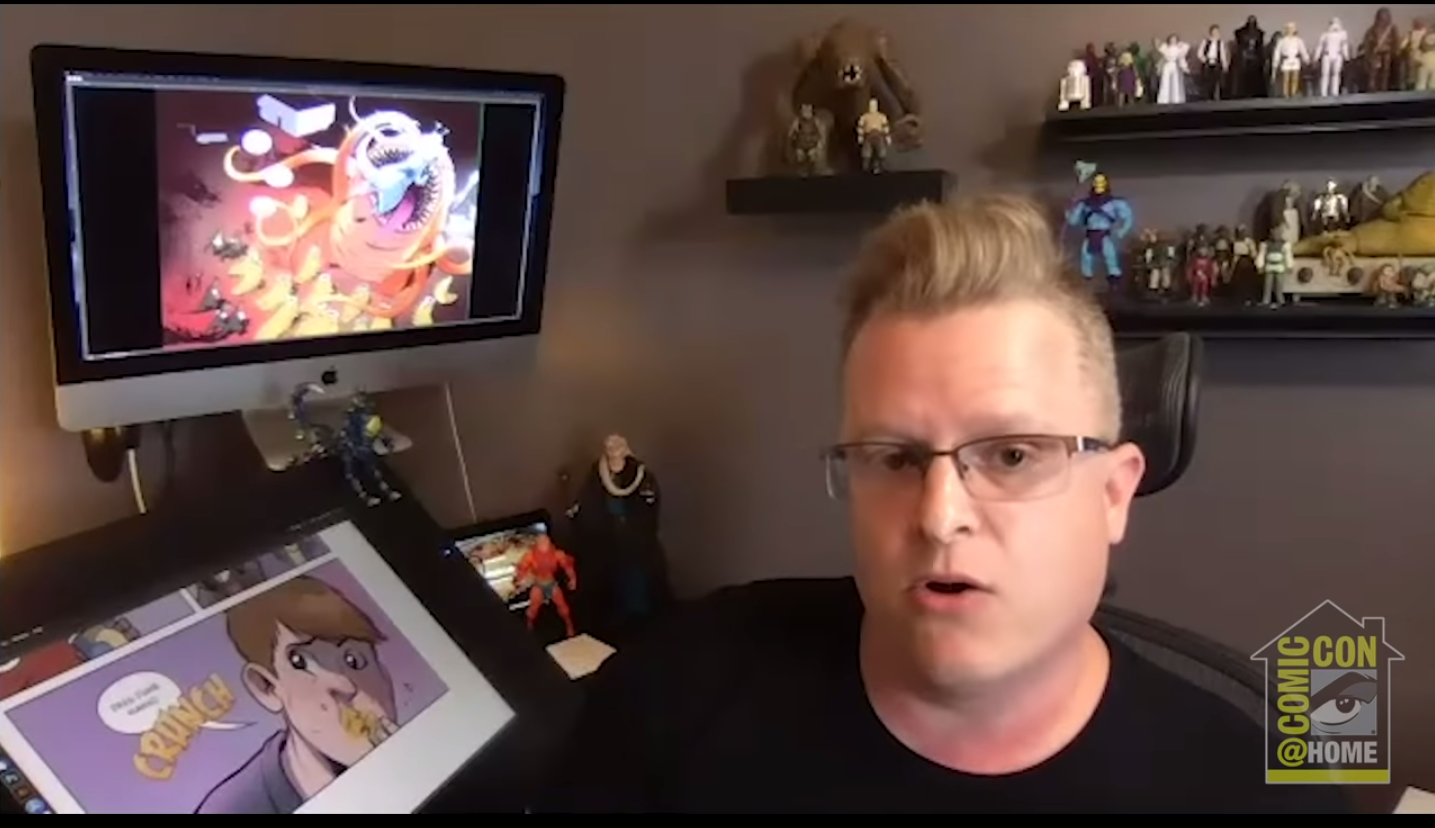
Grine said when the project was announced many Animorphs fans sought him out on social media with questions about the adaption’s fidelity to the source material.
“I wanted to stay as true to the books as possible,” said Grine. “So after I had done the initial sketches for the whole book, it was like 230 pages, and I was a little concerned that Scholastic may be concerned about the page count, the length of the book, at which case I maybe would have had to try to cut some scenes out or cut something out. Luckily, they were completely okay with it and it was great. So the answer to that is that I was almost at a straight adaptation of the book, and it’s been really fun to do.”
Grine did say that he cut out some dated pop culture references from the dialogue.
“I mean, it’s been a long time since those books came out,” said Grine. “So I didn’t really remove the reference so much as I made it a little bit more generic.”
Grine said that he tried to make sure the jokes would play well with members of the younger generation who might not grasp certain specific 1990s references, using his 12-year-old daughter as a guideline.
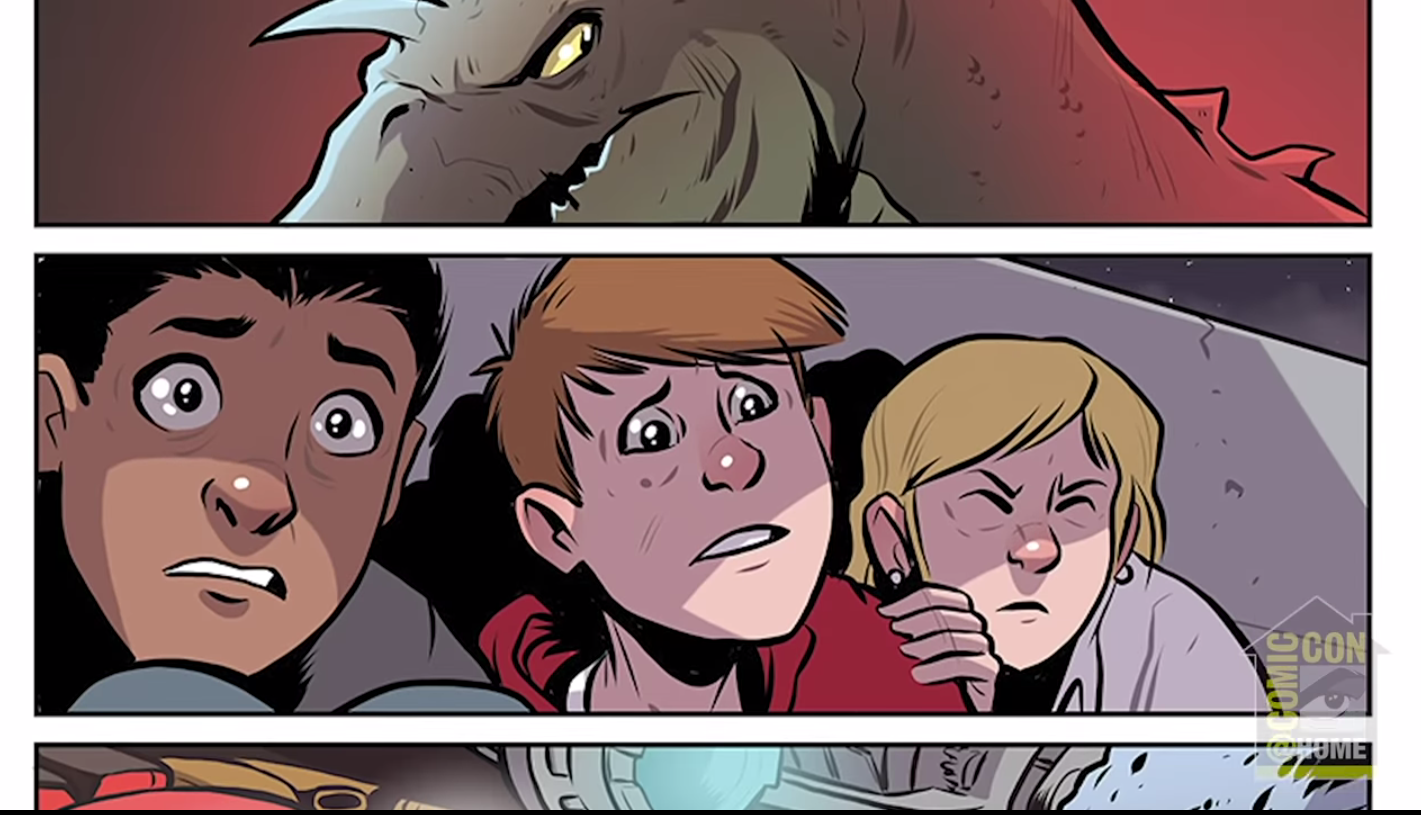
“I didn’t really change anything fundamentally about the story or the characters or anything that’s happening because there was no reason to,” said Grine. “It’s a very strong story and I wasn’t getting any notes to keep it under a certain page number or anything, so it was really good. I was very happy with all the collaboration with Scholastic and Graphix… I think you guys are going to be really happy with it.”
Geronimo Stilton
The panel also included Angleberger, the creator behind Geronimo Stilton: The Sewer Rat Stink, a graphic novel adaption based on the Geronimo Stilton children’s books by Elisabetta Dami. Angleberger’s previous work includes many books, such as The Strange Case of Origami Yoda and Rocket and Groot: Stranded on Planet Strip Mall.
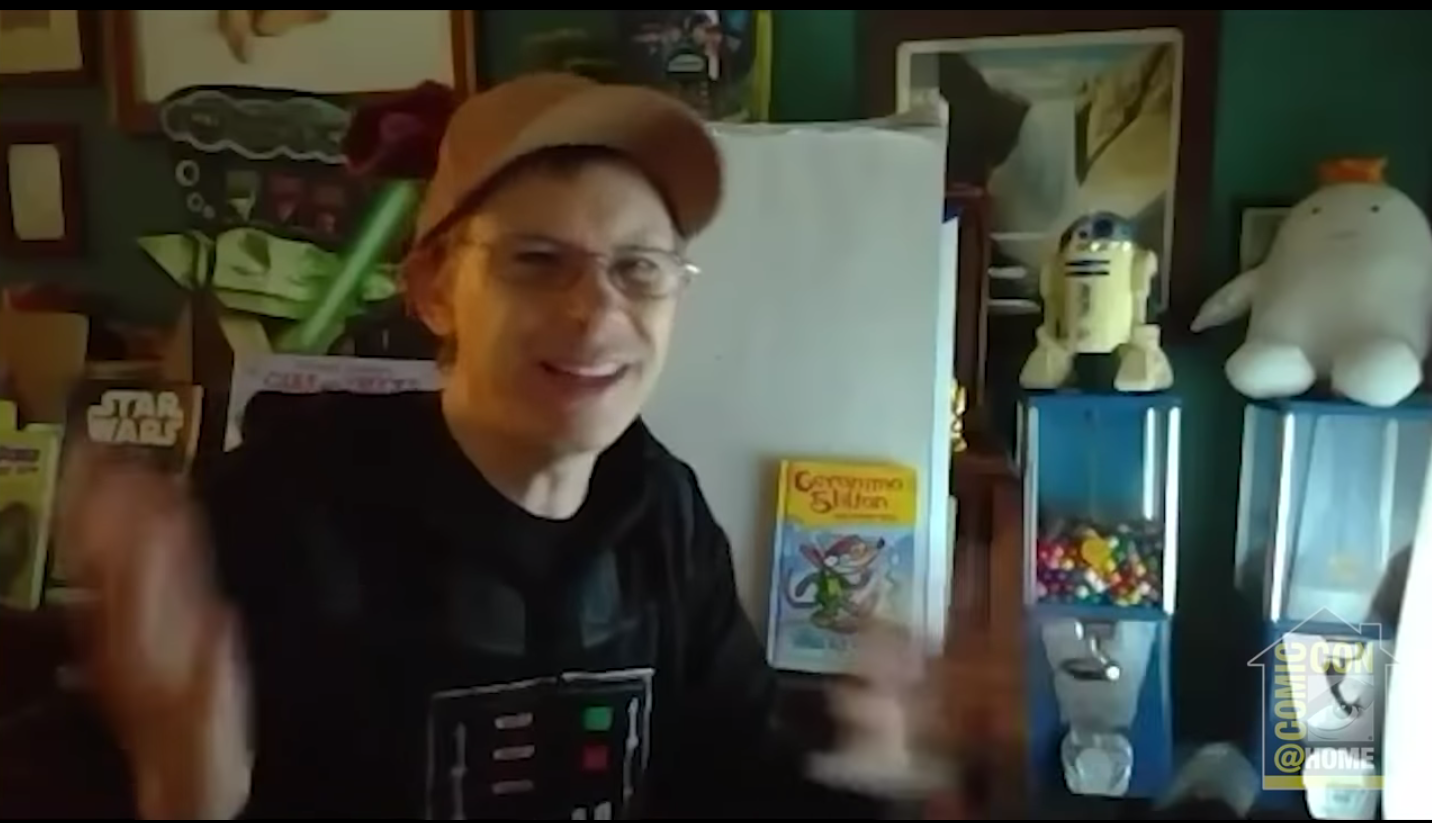
“I’ve had such a great time finally getting to write a graphic novel,” said Angelberger. “It’s been my dream since before the term graphic novel was popular. Back then I just wanted to write comic books. It’s been my dream for decades!”
Angelberger said he was already a fan of Geronimo Stilton, but he had to find his own way to draw the character. Eventually, he developed his own process, which he demonstrated for the panel, emphasizing Stilton’s very nice green suit.
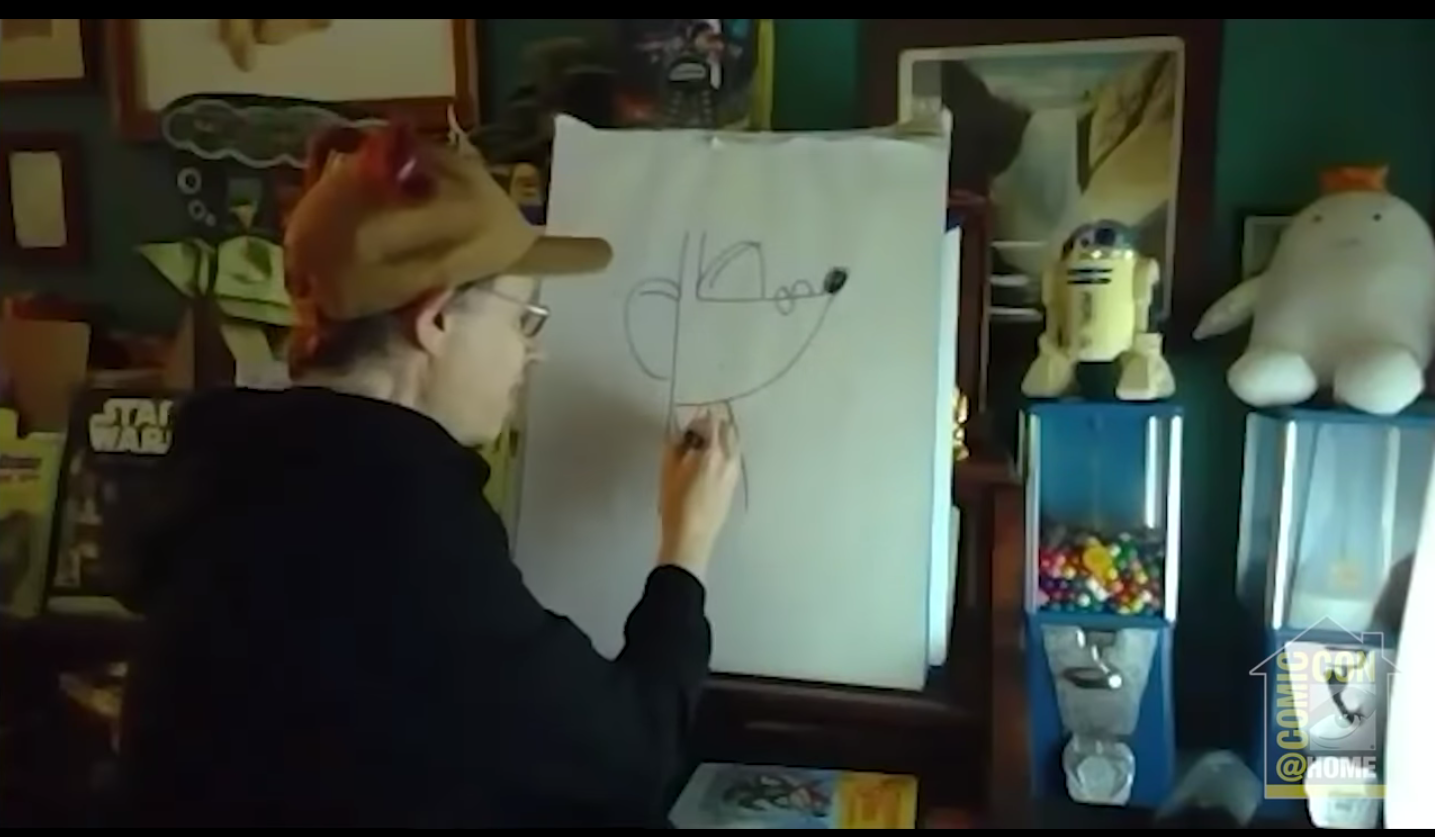
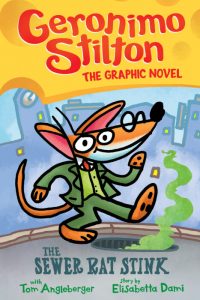
“It’s amazing the wide range of expressions this mouse has,” said Angelberger. “I’ve had so much fun drawing him.”
Angelberger said that Dami let him have a blast with the character.
“Thank you very much to Scholastic Graphix for letting me have this much fun,” concluded Angelberger.
Graphix Questions & Answers
The Q&A section included plenty of interesting insights, like the fact that Wright was influenced by and manga (watch for the anime references in Twins) and Johnson became a lifelong comics enthusiast because his friend Kevin Cooper turned him on to the Dark Phoenix saga. Applegate said that she didn’t get into reading until she was bit older, while Grant was introduced to Spider-Man when he was living in France at around age 8. Angelberger was a huge fan of the Fantastic 4, especially the Thing. And Cline said that it wasn’t until high school, when he was introduced to Jeff Smith’s Bone and The Tick, that comics really captured his imagination.
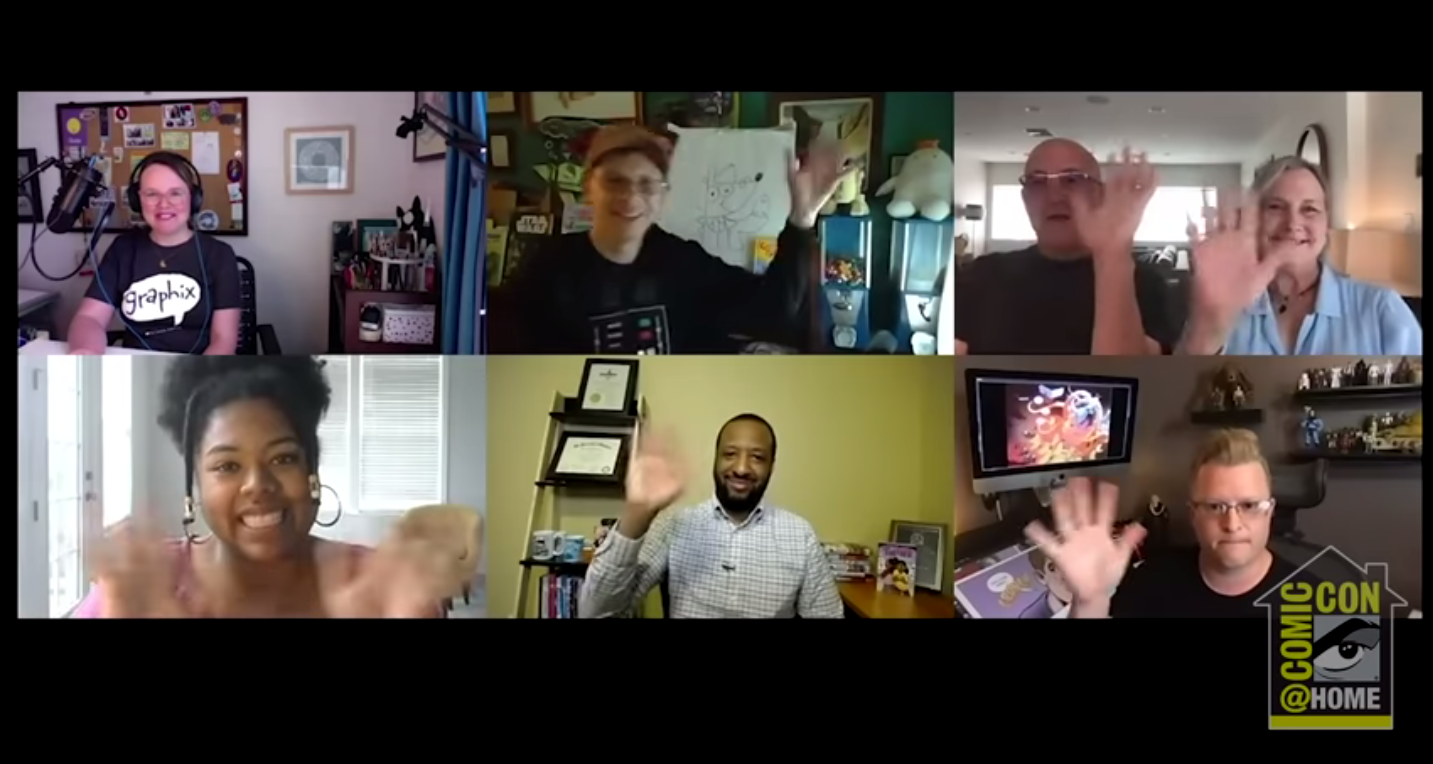
At the conclusion of the panel, Telgemeier asked if any of the panelists had any message of encouragement they’d like to share during the current period of history.
“I’m so glad to live in a timeline right now where people are being their genuine selves,” said Wright. “I have met so many people who have made my life better, and I hope I’ve made their lives better, and I couldn’t imagine not having them around and I want them to stay around and I hope you guys stay around.”
In spite of the reality of our collective situation, Applegate ultimately saw hope for the future.
“I would like to offer a blanket apology for my entire generation,” said Applegate. “Because we’ve obviously screwed a lot up. But every time I do an event, I meet young people, and I am always wildly optimistic by the time I’m done. I feel so encouraged, and I know they’re going to fix it all.”
Miss any of our other SDCC 2020 coverage? Click here for much more!


